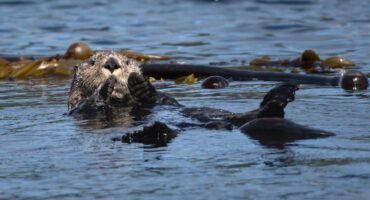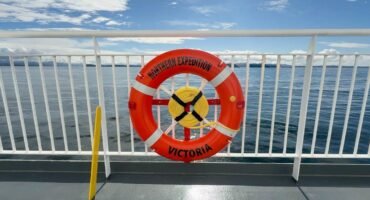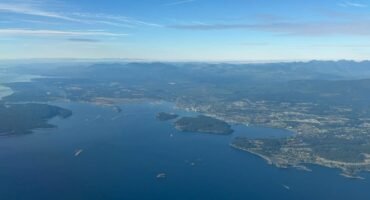
Two Days on the Infamous Drake
Not the Drake Lake
This year’s itinerary was the reverse of last year’s, meaning we tackled the notorious Drake Passage at the start instead of at the end. We knew we were in for some rough seas from the briefing the night before.
We awoke to Greg’s familiar wake-up call—his cheerful “Good morning, good people!”—and the unmistakable swell of the Drake as we passed Cape Horn. What still caught us off guard is just how long it takes to sail down the Beagle Channel (which runs east-west) before actually reaching the Drake.
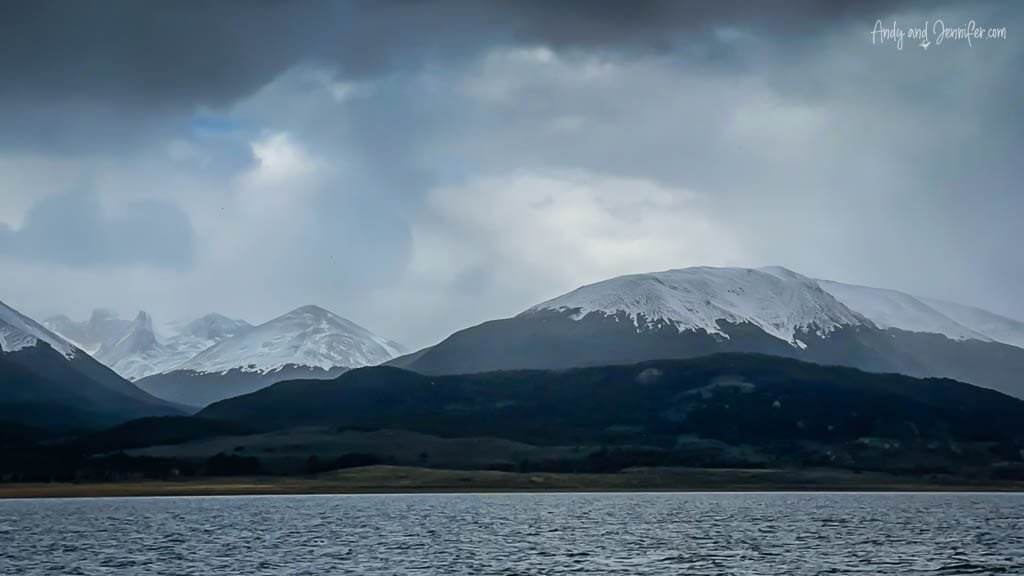
Once we rounded Cape Horn, the seas grew rougher. The next two days crossing the Drake were a bit of a blur, thanks to the anti-seasickness meds that left me groggy and half-asleep most of the time. I’d put on my travel wristbands and taken Dramamine, which kept me from getting sick but also knocked me out. Knowing that the seas would be calmer once we reached the Antarctic Peninsula definitely helped me stay positive.

I skipped breakfast but managed to rally for lunch, which felt like a small victory. In the afternoon, we all had to clean our gear to ensure we didn’t bring any environmental contaminants ashore in Antarctica. The expedition team set up shop in the lecture theatre, helping us pluck and tweeze every bit of debris from our clothing. Velcro was the biggest hassle, with some people even cutting it off their gear rather than cleaning it. I wasn’t about to sacrifice my $300 rain pants, so I painstakingly cleaned them instead. The price tag still makes me laugh—it felt ridiculous at the time, especially since it was for a single trip. But in Australia, quality gear options are limited, especially if you wait until spring to shop. And they fit really well. At least now I’m getting more use out of them, which makes the investment feel slightly less outrageous!

The rest of the day was a haze, and although I attempted to join the group for dinner, I didn’t make it far. The crew brought food to our cabin, but I couldn’t eat much. Thankfully, the ship adjusted course to follow a sliver of calmer seas, and we were lucky enough to enjoy a “Drake Lake”—the more serene version of the typically treacherous passage – for the rest of the crossing.
As we sailed further south—rumoured to be heading near the Antarctic Circle—we were fitted for muck boots in preparation for our landings.
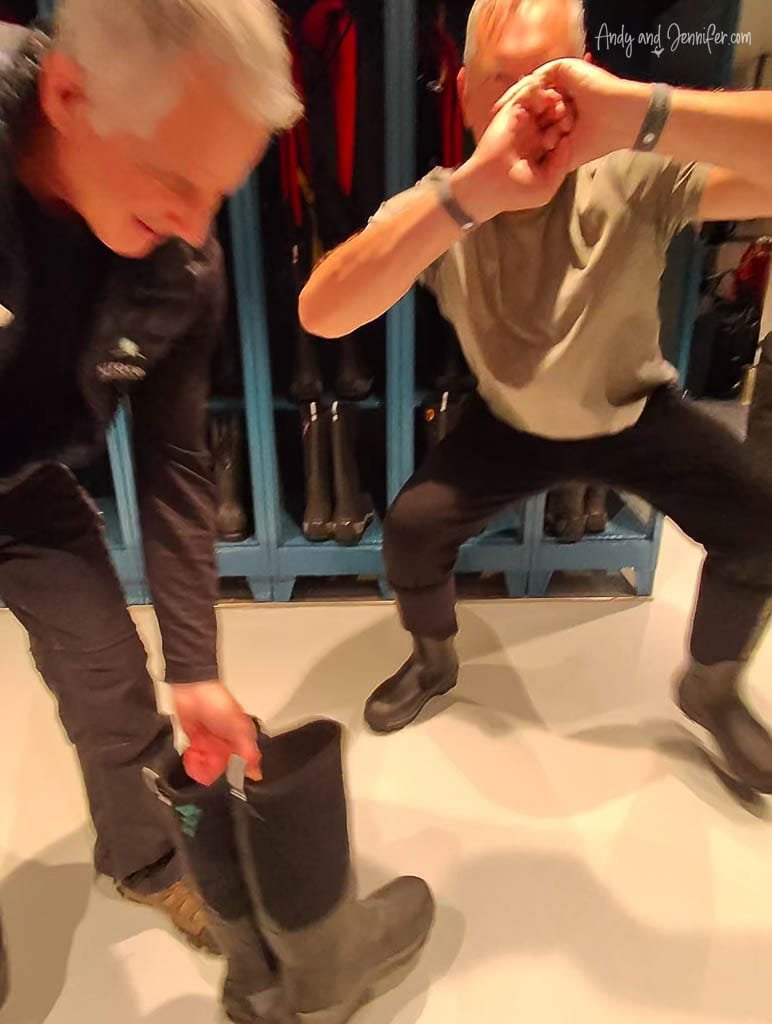
Andy tried on his dry suit for snorkelling, but I decided to sit it out this year. I’d done it last year, but we missed snorkelling near icebergs (the main appeal for me) due to being quarantined.

By the end of day two, we had crossed the Antarctic Convergence, where the cold Antarctic waters meet the warmer northern waters.
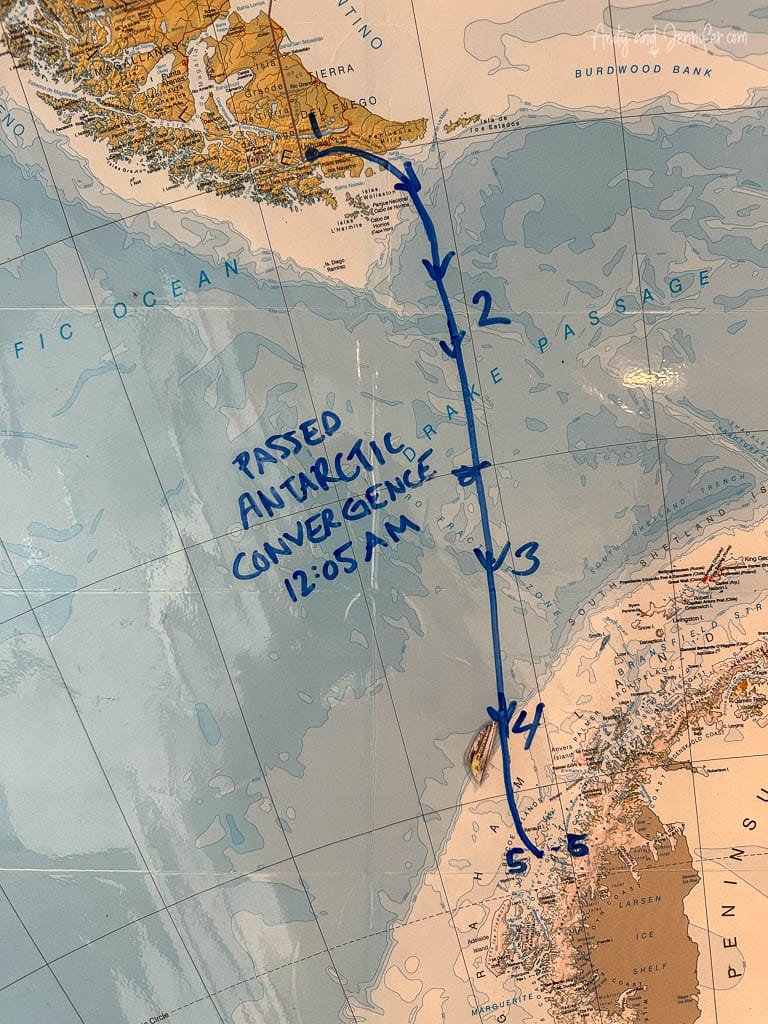
The temperature dropped noticeably, and then came the moment we’d all been waiting for—we spotted our first iceberg of the trip.

We also spotted some humpback whales, which are always a joy to watch (even when they are 500 meters away!).


It’s absolutely amazing how much bird life there so far from land. We spotted grey-headed albatross, black-browed albatross, white-chinned
petrels, Wilson’s storm petrels, Cape petrels and a prion. Photographing birds from a moving ship can be quite challenging. Trying to track a flying bird through a telephoto lens on a rocking ship is a recipe for seasickness, so I spent most of the time just watching.
petrels, Wilson’s storm petrels, Cape petrels and a prion. Photographing birds from a moving ship can be quite challenging. Trying to track a flying bird through a telephoto lens on a rocking ship is a recipe for seasickness, so I spent most of the time just watching.




The icebergs got more spectacular as we moved closer to the peninsula.


We’re Andy and Jennifer—two former corporate executives who chose long ago to prioritise experiences over stuff while pursuing our passions for travel and photography. From the Arctic to Antarctica, and most places in between, we’ve captured the world through our lenses and love sharing those stories. Our careers gave us the means, but our purpose is inspiring others to explore and helping people create images they’re proud of.


